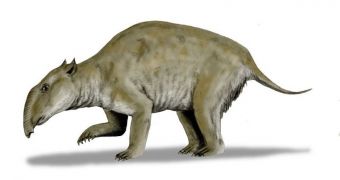According to a growing body of scientific pieces of evidence, it would appear that human activity was the main factor that led to the extinction of some of Australia's greatest animals. Previous investigations into the matter had concluded that climate change and variations in the hydrology and vegetation of the continent were the main elements that promoted a shift in biodiversity. However, over the past ten years or so, uncontroversial evidence has begun to emerge, pinning the blame for massive extinctions of species larger than 45 kilograms to early humans, Nature News reports.
Animals such as the gigantic kangaroo Procoptodon, and the two-tonne marsupial Diprotodon are only two of the over 50 species that are estimated to have gone extinct during the Pleistocene epoch, which began about 2.6 million years ago, and ended fairly recently (12,000 years ago). It is now widely believed that the ancestors of Australian Aborigines, who arrived on the continent between 60,000 and 45,000 years ago, hunted down and killed these animals fairly rapidly. Those that were not hunted down were driven to extinction by the loss of habitat, as the people started setting the natural landscape of Australia on fire, to make way for developments.
Other experts have proposed that one of the main elements that led to the 50 species being extinguished was a spike in cold temperature. In support of their theories, they bring the fact that the world entered an ice age a short time ago (in geological terms). The peak of this climate event was reached about 21,000 years ago. In a new study conducted at the Australian National University in Canberra, expert and geochronologist Rainer Grun and his team demonstrated that the animals did not coexist with humans for many years. If this idea had been proven, it could have meant that the early ancestors of Aborigines did not hunt down and killed every last one of the giant creatures.
The group used electron spin resonance (ESR) and uranium-series dating techniques to discover the age of some of the most recent fossils of these 50 species. They determined that all of the specimens that were studied were more than 50,000 years old, and that some of them were even older than that. The full details of the work appear in the latest issue of the respected scientific journal Quaternary Science Reviews. Still, regardless of these results, it is unlikely that many scientists would renounce the climate-based explanation. “Climate may not be the only factor, but it can't be eliminated as a significant consideration,” University of Utah archaeologist James O'Connell says.

 14 DAY TRIAL //
14 DAY TRIAL //